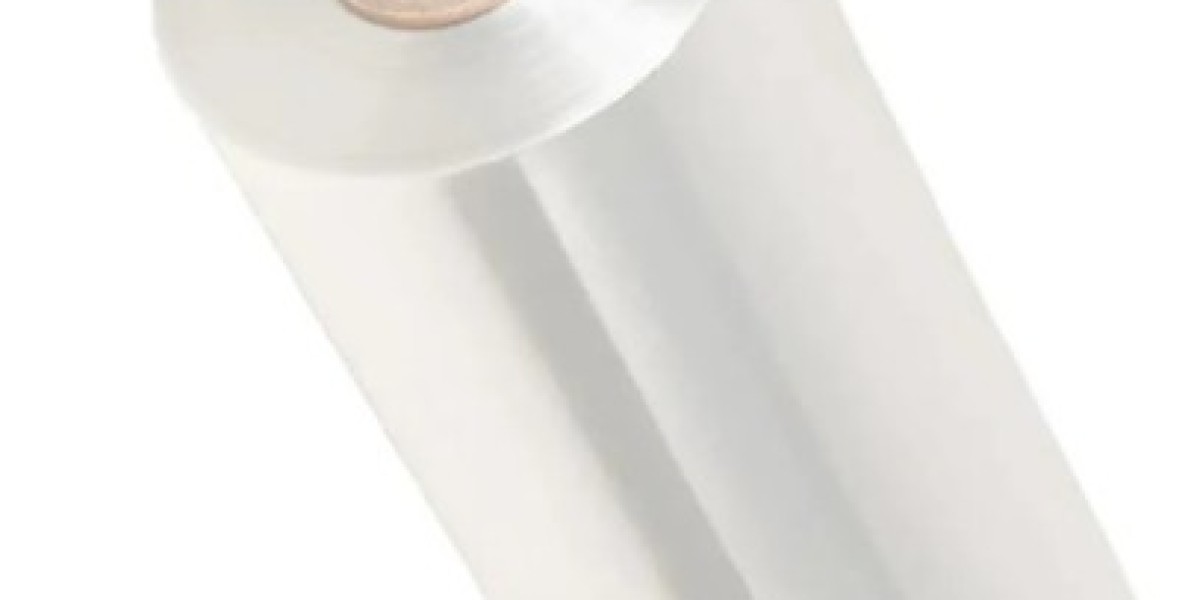Shrink wrap films have become an essential component in the packaging industry, offering a cost-effective, secure, and visually appealing way to wrap and protect products. With a variety of shrink wrap materials available, understanding the differences between PVC (Polyvinyl Chloride), POF Shrink Film , and Polyethylene (PE) shrink films is crucial for selecting the right option for specific packaging needs. Each type of shrink film offers distinct advantages, making them suitable for various applications in industries ranging from food packaging to retail and industrial uses. In this guide, we will explore the key characteristics of PVC, Polyolefin, and Polyethylene shrink wrap films to help you make an informed decision for your packaging requirements.
1. PVC Shrink Wrap Film
Polyvinyl Chloride (PVC) shrink wrap film is one of the oldest and most commonly used materials in the shrink film industry. Known for its excellent shrinkage properties, PVC provides a tight, durable, and aesthetically pleasing seal around products. It is often used for smaller consumer items, ensuring they remain intact during transport and storage.
Key Features of PVC Shrink Wrap Film:
High Shrinkage Rate: PVC offers a high level of shrinkage, which allows it to tightly conform to the shape of the product, making it ideal for irregularly shaped or small items.
Optical Clarity: PVC shrink film provides excellent clarity and a glossy finish, enhancing the visual appeal of packaged products, especially in retail settings.
Cost-Effective: PVC is generally more affordable than other shrink films, making it a go-to option for companies looking for a budget-friendly packaging solution.
Brittleness in Cold Conditions: While PVC is durable under normal conditions, it becomes brittle when exposed to low temperatures, making it unsuitable for products that need to be stored or shipped in cold climates.
Environmental Impact: PVC has a higher environmental impact compared to other shrink films, as it is not biodegradable and may release harmful chemicals when incinerated.
PVC shrink wrap is commonly used for retail packaging of products such as toys, DVDs, books, and consumer electronics, where product visibility is crucial, and the packaging needs to offer both protection and aesthetic appeal.
2. Polyolefin (POF) Shrink Wrap Film
Polyolefin shrink film, often referred to as POF, is a high-performance shrink wrap material that combines the best properties of both polyethylene and polypropylene. Known for its strength, flexibility, and excellent clarity, POF is increasingly becoming the preferred choice for a wide range of packaging applications.
Key Features of Polyolefin (POF) Shrink Wrap Film:
Superior Strength and Durability: POF is known for its impressive strength, flexibility, and resistance to punctures and tears, making it ideal for packaging delicate items or products that require secure and reliable protection.
Crystal Clear Finish: POF offers outstanding optical clarity, allowing consumers to clearly view the product inside the packaging. This is particularly valuable for retail applications where presentation matters.
Food-Safe and Non-Toxic: POF is widely used in the food industry because it is safe for direct contact with food products. It is also free from harmful chemicals like chlorine, making it a better choice for eco-conscious businesses.
Heat Resistance: POF is highly resistant to heat, providing excellent shrinkage even when exposed to higher temperatures during the packaging process.
Eco-Friendly: Unlike PVC, POF is more environmentally friendly as it is recyclable and free from chlorine-based chemicals, making it a better option for sustainable packaging.
POF shrink film is commonly used for food packaging, consumer goods, and products that require both strength and high visibility. It is a versatile option for companies looking for a combination of durability and clarity.
3. Polyethylene (PE) Shrink Wrap Film
Polyethylene (PE) shrink wrap film is one of the most widely used types of shrink film due to its affordability and versatility. It is available in both low-density polyethylene (LDPE) and high-density polyethylene (HDPE) variations, each offering unique benefits.
Key Features of Polyethylene (PE) Shrink Wrap Film:
Affordable and Cost-Effective: PE shrink wrap is one of the most affordable shrink films on the market, making it a popular choice for businesses with tight budgets or large-volume packaging needs.
Moisture Resistance: PE provides excellent protection against moisture, making it ideal for packaging items that may be exposed to humidity or external weather conditions.
Durability: PE shrink wrap is highly durable, offering good resistance to punctures and tears, making it suitable for heavy-duty packaging applications.
Limited Transparency: While PE offers durability and moisture resistance, it does not have the same level of clarity or glossy finish as POF or PVC. This can make it less suitable for products that require high visibility.
Environmental Considerations: PE is considered more environmentally friendly than PVC, as it is recyclable and does not release harmful chemicals during disposal.
PE shrink film is commonly used for bulk packaging, industrial products, and consumer goods where durability is a priority over high clarity. It is also popular in food packaging, particularly for items like bottles, cans, and large food containers.
Comparing PVC, POF, and PE Shrink Wrap Films
1. Shrinkage and Fit
PVC: Offers high shrinkage, providing a tight fit for small and irregularly shaped products.
POF: Provides excellent shrinkage with a smooth and tight fit, making it ideal for a wide range of applications.
PE: While PE offers good shrinkage, it may not conform as tightly or neatly as POF or PVC, especially for small or intricate products.
2. Clarity and Aesthetic Appeal
PVC: Known for its high clarity and glossy finish, making it the best option for retail packaging where presentation is crucial.
POF: Offers superior clarity and a professional appearance, making it the ideal choice for consumer goods and food packaging.
PE: Less transparent than PVC or POF, and may not provide the same visual appeal for retail products.
3. Durability and Strength
PVC: Offers decent durability but can become brittle in cold temperatures.
POF: Known for its excellent durability and puncture resistance, making it suitable for both delicate and heavy-duty products.
PE: Highly durable and resistant to moisture, making it ideal for bulkier items or products exposed to outdoor conditions.
4. Environmental Impact
PVC: Has a higher environmental impact due to its non-biodegradability and the release of harmful chemicals.
POF: Considered an eco-friendly option as it is recyclable and chlorine-free.
PE: Also eco-friendly and recyclable, making it a sustainable choice for businesses looking to minimize their environmental footprint.
Each type of shrink film—PVC, Polyolefin (POF), and Polyethylene (PE)—offers unique benefits that make them suitable for different packaging applications. PVC is an affordable option with excellent clarity but has environmental and temperature-related limitations. POF offers superior strength, clarity, and flexibility, making it ideal for high-end retail packaging and food products. PE is a durable, cost-effective, and moisture-resistant option suitable for industrial and bulk packaging.
Understanding the differences between these shrink films will help businesses select the most appropriate material for their packaging needs, ensuring both product protection and visual appeal.Visit www.jtpackage.com for comprehensive details on Polyolefin Shrink Film (POF)



